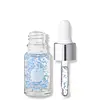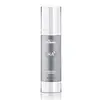What's inside
What's inside
 Key Ingredients
Key Ingredients

 Benefits
Benefits

 Concerns
Concerns

 Ingredients Side-by-side
Ingredients Side-by-side

Water
Skin ConditioningDimethicone
EmollientHdi/Trimethylol Hexyllactone Crosspolymer
Glycerin
HumectantButylene Glycol
HumectantBis-PEG-8 Dimethicone
Skin ConditioningPolysilicone-11
Sodium Acrylate/Sodium Acryloyldimethyl Taurate Copolymer
Emulsion StabilisingSodium Hyaluronate Crosspolymer
HumectantHydrolyzed Hyaluronic Acid
HumectantSodium Hyaluronate
HumectantVitis Vinifera Flower Cell Extract
MaskingVibrio Alginolyticus Ferment Filtrate
AbrasiveAlteromonas Ferment Extract
Skin ConditioningPorphyridium Cruentum Extract
Skin ConditioningWhey Protein
Skin ConditioningPlankton Extract
Skin ConditioningTrehalose
HumectantUrea
BufferingSerine
MaskingAlgin
MaskingCaprylyl Glycol
EmollientPullulan
Disodium Phosphate
BufferingPotassium Phosphate
BufferingPentylene Glycol
Skin ConditioningPolymethylsilsesquioxane
Glyceryl Polyacrylate
Sodium Citrate
BufferingSea Water
HumectantSucrose Palmitate
EmollientTocopheryl Acetate
AntioxidantHydroxyacetophenone
AntioxidantPolysorbate 60
EmulsifyingPropanediol
SolventPotassium Sorbate
PreservativeCitric Acid
BufferingIsohexadecane
EmollientPolysorbate 80
EmulsifyingSilica
AbrasiveDecyl Glucoside
CleansingTromethamine
BufferingEthylhexylglycerin
Skin ConditioningPhenoxyethanol
PreservativeDisodium EDTA
Water, Dimethicone, Hdi/Trimethylol Hexyllactone Crosspolymer, Glycerin, Butylene Glycol, Bis-PEG-8 Dimethicone, Polysilicone-11, Sodium Acrylate/Sodium Acryloyldimethyl Taurate Copolymer, Sodium Hyaluronate Crosspolymer, Hydrolyzed Hyaluronic Acid, Sodium Hyaluronate, Vitis Vinifera Flower Cell Extract, Vibrio Alginolyticus Ferment Filtrate, Alteromonas Ferment Extract, Porphyridium Cruentum Extract, Whey Protein, Plankton Extract, Trehalose, Urea, Serine, Algin, Caprylyl Glycol, Pullulan, Disodium Phosphate, Potassium Phosphate, Pentylene Glycol, Polymethylsilsesquioxane, Glyceryl Polyacrylate, Sodium Citrate, Sea Water, Sucrose Palmitate, Tocopheryl Acetate, Hydroxyacetophenone, Polysorbate 60, Propanediol, Potassium Sorbate, Citric Acid, Isohexadecane, Polysorbate 80, Silica, Decyl Glucoside, Tromethamine, Ethylhexylglycerin, Phenoxyethanol, Disodium EDTA
Ingredients Explained
These ingredients are found in both products.
Ingredients higher up in an ingredient list are typically present in a larger amount.
Algin is brown algae. Algae is an informal term for a group of aquatic organisms that can photosynthesize. It is estimated there are at least 30,000 types of Algae.
Algae contains antioxidants. Antioxidants help fight free-radicals. Free-radicals are molecules that may damage your skin cells, such as pollution.
Butylene Glycol (or BG) is used within cosmetic products for a few different reasons:
Overall, Butylene Glycol is a safe and well-rounded ingredient that works well with other ingredients.
Though this ingredient works well with most skin types, some people with sensitive skin may experience a reaction such as allergic rashes, closed comedones, or itchiness.
Learn more about Butylene GlycolGlycerin is already naturally found in your skin. It helps moisturize and protect your skin.
A study from 2016 found glycerin to be more effective as a humectant than AHAs and hyaluronic acid.
As a humectant, it helps the skin stay hydrated by pulling moisture to your skin. The low molecular weight of glycerin allows it to pull moisture into the deeper layers of your skin.
Hydrated skin improves your skin barrier; Your skin barrier helps protect against irritants and bacteria.
Glycerin has also been found to have antimicrobial and antiviral properties. Due to these properties, glycerin is often used in wound and burn treatments.
In cosmetics, glycerin is usually derived from plants such as soybean or palm. However, it can also be sourced from animals, such as tallow or animal fat.
This ingredient is organic, colorless, odorless, and non-toxic.
Glycerin is the name for this ingredient in American English. British English uses Glycerol/Glycerine.
Learn more about GlycerinHydrolyzed Hyaluronic Acid is a form of hyaluronic acid. It is created by the hydrolysis of hyaluronic acid with a high molecular weight. Once created, Hydrolyzed Hyaluronic Acid has a low molecular weight.
Low molecular weight HA has been shown to hydrate and increase elasticity of the skin. Increasing elasticity is also associated with reduction of wrinkle depth.
One study found topical low molecular weight hyaluronic acid may be considered for the treatment of rosacea in the adult population. However, we always recommend speaking with a professional about your skin concerns.
Hyaluronic acids are a humectant. This means they draw moisture from the air. Hyaluronic acids help moisturize, soothe, and protect the skin.
Read more about other common forms of hyaluronic acid:
Learn more about Hydrolyzed Hyaluronic AcidPentylene glycol is typically used within a product to thicken it. It also adds a smooth, soft, and moisturizing feel to the product. It is naturally found in plants such as sugar beets.
The hydrophilic trait of Pentylene Glycol makes it a humectant. As a humectant, Pentylene Glycol helps draw moisture from the air to your skin. This can help keep your skin hydrated.
This property also makes Pentylene Glycol a great texture enhancer. It can also help thicken or stabilize a product.
Pentylene Glycol also acts as a mild preservative and helps to keep a product microbe-free.
Some people may experience mild eye and skin irritation from Pentylene Glycol. We always recommend speaking with a professional about using this ingredient in your routine.
Pentylene Glycol has a low molecular weight and is part of the 1,2-glycol family.
Learn more about Pentylene GlycolPhenoxyethanol is a preservative that has germicide, antimicrobial, and aromatic properties. Studies show that phenoxyethanol can prevent microbial growth. By itself, it has a scent that is similar to that of a rose.
It's often used in formulations along with Caprylyl Glycol to preserve the shelf life of products.
Polysorbate 80 is a surfactant and emulsifier. It is used to keep ingredients together, and prevent oils and waters from separating.
It is made from polyethoxylated sorbitan and oleic acid. This ingredient can be found in cosmetics, foods, and medicine. It is water-soluble.
Polysorbate 80 may not be fungal acne safe.
Learn more about Polysorbate 80Sodium Hyaluronate is hyaluronic acid's salt form. It is commonly derived from the sodium salt of hyaluronic acid.
Like hyaluronic acid, it is great at holding water and acts as a humectant. This makes it a great skin hydrating ingredient.
Sodium Hyaluronate is naturally occurring in our bodies and is mostly found in eye fluid and joints.
These are some other common types of Hyaluronic Acid:
Learn more about Sodium HyaluronateWater. It's the most common cosmetic ingredient of all. You'll usually see it at the top of ingredient lists, meaning that it makes up the largest part of the product.
So why is it so popular? Water most often acts as a solvent - this means that it helps dissolve other ingredients into the formulation.
You'll also recognize water as that liquid we all need to stay alive. If you see this, drink a glass of water. Stay hydrated!
Learn more about Water